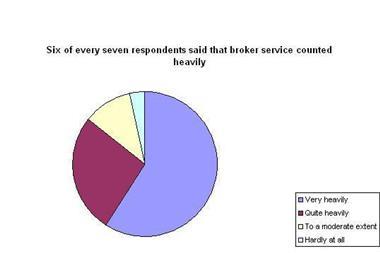The introduction of more volatile risks into the captive strategy increases the risk of complex claims. Simon Kilgour and a panel of experts on captives consider potential disputes
The captive insurance company has become a well-established feature in the insurance landscape. A tried and trusted mechanism for enabling well-capitalised companies to retain greater risks, the captive now forms an integral component of the risk management strategies of many large corporations.
While question marks remain over the extent to which the mechanism is being exploited to its full potential, as evidenced by Marsh’s recent captive benchmarking report, ‘Next generation captives – optimising opportunities’, a more proactive approach to risk management is seeing some companies re-evaluating their retention strategies and looking to retain more complex risks within the structure.
Traditionally used to house predictable, high frequency, low impact risks with a well-documented claims history, more sophisticated modelling techniques coupled with increasing frustration at insurance market volatility, unavailability of cover, and issues relating to ‘willingness to pay’, are broadening the captive remit to encompass more unpredictable, low frequency, high impact risks, such as natural catastrophes. However, this steers the captive out of its traditional safe harbour and leaves it exposed to larger and more complex claims with a greater potential for conflict.
To ascertain where such disputes are most likely to arise and to consider steps to mitigate potential conflicts, a group of leading captive experts recently met in London to discuss these issues.
Roles and responsibilities
The emergence of this new generation of less risk-averse captives and the greater potential for larger and more complex claims as a result, raises the question as to the extent to which the various contractual relationships within the captive structure, involving captive, parent, captive manager, broker, fronting company, reinsurer and a range of other service providers, might prove its Achilles heel in the event of a claim dispute.
It is imperative that all captives factor the potential for a settlement conflict into their plans and devise a strategy for handling disputed claims effectively. According to Jonathan Groves, regulators are increasingly demanding that captives demonstrate clearly in their business plans their structures for handling claims issues, particularly in the EU. ‘Contracts need to be in place with all parties to the captive, and particularly the reinsurance broker, as well as all third parties involved,’ he explains.
While acknowledging that, on a day-to-day basis, the interaction between parties to the captive is generally a smooth process, Alan Burton warns that it is in the context of a major claim that relationships will really be put to the test. ‘This is when conflicts may arise, and the governance implications between parent and broker may not have been reviewed. Only at this point might the contracts be consulted for the first time. I would therefore encourage everyone to think ahead and to establish a clear understanding of their contractual arrangements.’
His comments are supported by those of Dominic Wheatley, who urges companies to constantly review their contracts. ‘It is essential to have the right contracts in place, ensuring clarity of structure and responsibility,’ he believes, adding that not only is this important to ensure the smooth running of the operation, but also in the context of disputed claims, where conflicts over roles and responsibilities emerge.
Lines of separation
“It is imperative that all captives factor the potential for a settlement conflict into their plans.
One potential area for conflict is where there is uncertainty as to the responsibilities of captive manager and broker and the level of independency which can be established, with the broker often in the captive driving seat in the decision-making process.
The importance of creating a level of separation is emphasised by Julian Cowburn. ‘We had a broker and a captive manager in the same organisation,’ he explains, ‘but we have now separated them through different interactions. We have a different broker to our captive manager, and that is working very well.’
David Ketley is also adamant that the management of the captive and the purchasing of the reinsurance should be handled separately. ‘The captive manager is there to manage the captive; the broker is there to obtain the reinsurance quotes and buy the cover. These are entirely different jobs. We use one broker for managing the captive, but they do not get involved in the reinsurance of the captive – we use three other brokers for that.’
The reinsurance relationship
As Wheatley points out, the majority of the disputes which arise in the captive context relate to the reinsurance arrangements. The biggest risk facing any captive from a reinsurance perspective, he explains, is the failure of its reinsurer to respond to a claim. ‘That is why the reinsurance agreements, and having access to specific reinsurance contracts, are extremely important.’ Given this fact, he finds it surprising that in some instances the ‘humble captive manager’ will be asked to sign off on the reinsurance contract. ‘This is a very critical risk and the board of the captive must take it seriously.’
A key issue in the relationship between reinsurer and captive, according to Clive Thursby is the level at which the company is interacting with the insurance market, as opposed to simply having ‘a repackaged direct programme’ in place. ‘The captive is often engaging the reinsurance market at a lower level than they typically work at. If you start asking them to pay claims that ordinarily are below their threshold, they are much more sensitive as to whether it is payable.’
Who then is taking responsibility for the reinsurance agreements? If the captive manager is not signing off on the contracts, does the role fall to the risk manager, or is this delegated to a reinsurance broker? If this is the case, will the reinsurance broker interact sufficiently with the placing broker to ensure that they fully understand the nuances of the risks present to ensure adequate reinsurance cover is purchased? Are all parties alive to the potential mismatch between the cover provided by the captive and by their reinsurers?
It must also always be acknowledged that a reinsurer will only respond to properly covered losses that a bona fide insurer would pay. Steps should be taken to ensure that insurances and reinsurances will respond to realistic disaster scenarios and that the scope of what will be covered in such scenarios corresponds with the risk manager’s expectations. This process should be documented to ensure that that all key parties in the chain have a full understanding of it. In an effort to achieve this, captives should be encouraged to road test the wordings of insurance and reinsurance contracts against such disaster scenarios, a process which is rare.
‘But what constitutes a realistic disaster scenario?’ asks Ketley. ‘Was 9/11 a realistic scenario? Disasters tend to be a combination of events which you considered separately, but not together.’ This serves to highlight the point that many disputes revolve around claims events that fall outside the norm, says Wheatley. ‘It was not in their scope of foreseeable claim events, and they had not considered it.’
The issue goes right to the heart of the problem, believes Stephen May. ‘Most disputes in insurance come from the fact that either the buyer or the seller finds themselves in a situation that they did not think was going to happen. To remove the potential for dispute, people should be encouraged to buy and sell a commodity which both parties have examined and understand that they can deliver.’
“The need for clarity exists on a number of fronts.
A need for clarity
‘Clarity and transparency appear to be the key to insurance,’ says Ketley. ‘There should not be any difference whether it is a direct insurance company, a captive, or the reinsurer of a captive.’
Pat Smith highlights the fact that in one organisation you may have ten different policies, each generated by a different division. ‘It is important to identify that risk before you face a large loss,’ he urges. ‘There is an exposure until every contract has been examined and questions asked about who bought it, why they bought it, what it is trying to achieve, and whether it is still needed.’
The need for clarity exists on a number of fronts within the captive, including: the roles and responsibilities within the team, the risks covered by the captive, whether they have altered in any way, whether they are effectively covered by reinsurance arrangements; and the wordings of those contracts.
Considering the latter point, the importance of achieving clarity in terms of the wordings of the reinsurance contracts involved is essential. Continuity of terms and wordings in relation to back-to-back coverage across all layers within the captive is key to avoiding the potential for contradictory clauses, and resulting settlement disputes. Contracts should undergo rigorous review in the run-up to each renewal to ensure that coverage remains adequate and continuity of terms is achieved. However, as Ketley points out, achieving continuity all the way to the top may not always be possible, for example, if the top layer is on a claims made basis – ‘but if you are aware of that, and can explain the proposed structure and its potential limitations to the board, then it is up to them to make a commercial decision.’
Given the increasing willingness of organisations to introduce greater volatility into their captive strategies, risk managers should seek greater clarification over potential complex claims scenarios and possible loss levels. Delegation of authority should also be considered in this context, as a complex claim situation could leave the risk manager exposed to a conflict of interest if he is to represent the interests of both corporate and captive. ‘We work with one company that is going through that particular issue,’ explains Groves. ‘The risk manager has excused himself from the corporate perspective, because he has had sight of information relating to the captive. The parent retains one set of legal counsel and the captive another.’ Depending on the complexity of the claim, it may be necessary to set up a separate sub-committee to handle the proceedings.
Plans in place
The discussion on how to manage conflicts within the captive produced a range of potential areas for dispute, and it has only been possible in this article to touch upon some of those weak points.
As the captive develops a greater risk appetite, this development heightens the risk of dispute. Mitigation can only be achieved through planning ahead, reviewing and amending contracts, and ensuring that all parties to the captive have a clear understanding of their roles and responsibilities.
Postscript
Simon Kilgour is partner and head of reinsurance, Reynolds Porter Chamberlain, Tel: +44 (0)20 3060 6450, e-mail: simon.kilgour@rpc.co.uk
















No comments yet